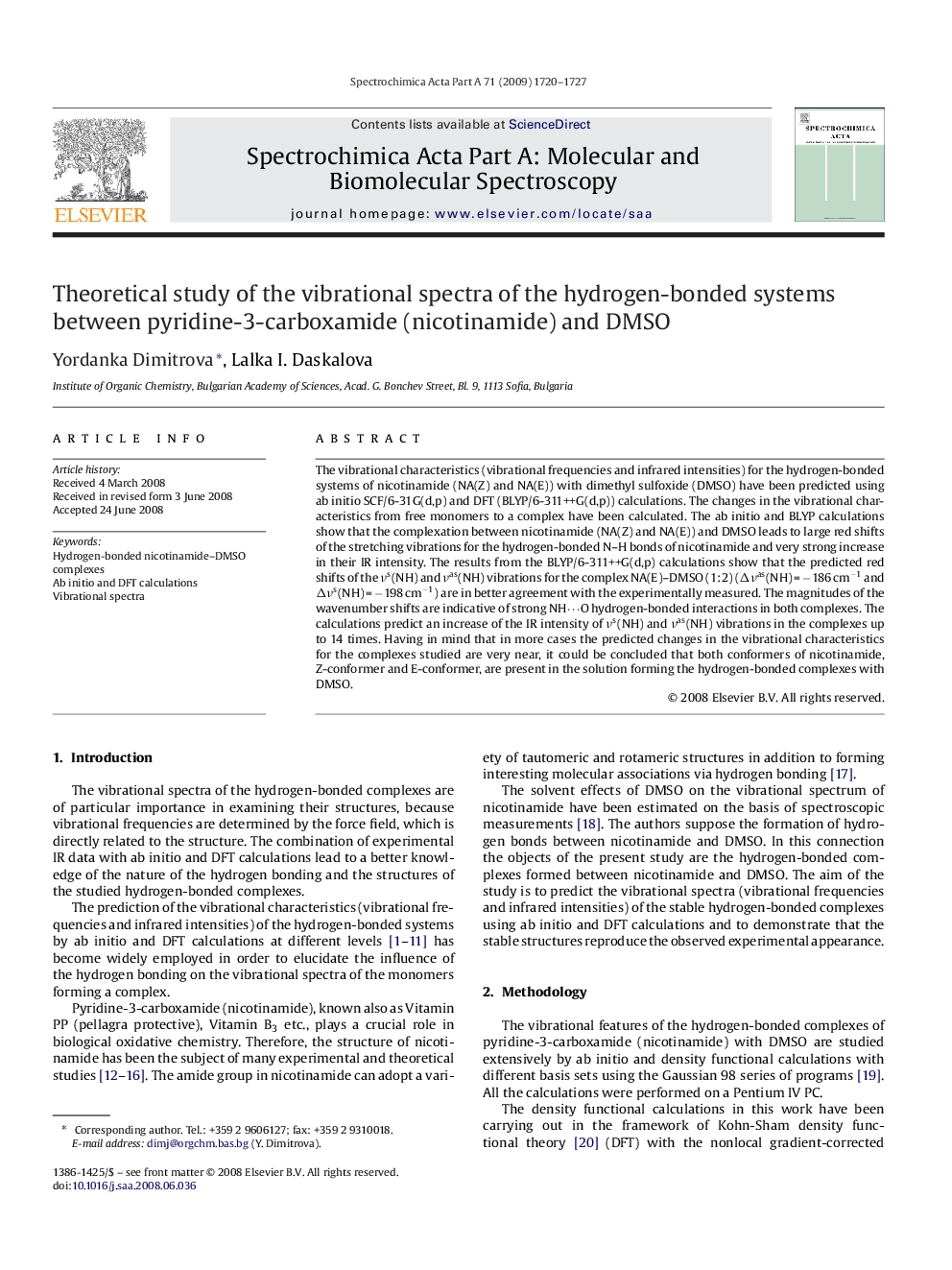| Article ID | Journal | Published Year | Pages | File Type |
|---|---|---|---|---|
| 1234960 | Spectrochimica Acta Part A: Molecular and Biomolecular Spectroscopy | 2009 | 8 Pages |
The vibrational characteristics (vibrational frequencies and infrared intensities) for the hydrogen-bonded systems of nicotinamide (NA(Z) and NA(E)) with dimethyl sulfoxide (DMSO) have been predicted using ab initio SCF/6-31G(d,p) and DFT (BLYP/6-311++G(d,p)) calculations. The changes in the vibrational characteristics from free monomers to a complex have been calculated. The ab initio and BLYP calculations show that the complexation between nicotinamide (NA(Z) and NA(E)) and DMSO leads to large red shifts of the stretching vibrations for the hydrogen-bonded N–H bonds of nicotinamide and very strong increase in their IR intensity. The results from the BLYP/6-311++G(d,p) calculations show that the predicted red shifts of the νs(NH) and νas(NH) vibrations for the complex NA(E)–DMSO (1:2) (Δνas(NH) = −186 cm−1 and Δνs(NH) = −198 cm−1) are in better agreement with the experimentally measured. The magnitudes of the wavenumber shifts are indicative of strong NH⋯O hydrogen-bonded interactions in both complexes. The calculations predict an increase of the IR intensity of νs(NH) and νas(NH) vibrations in the complexes up to 14 times. Having in mind that in more cases the predicted changes in the vibrational characteristics for the complexes studied are very near, it could be concluded that both conformers of nicotinamide, Z-conformer and E-conformer, are present in the solution forming the hydrogen-bonded complexes with DMSO.
